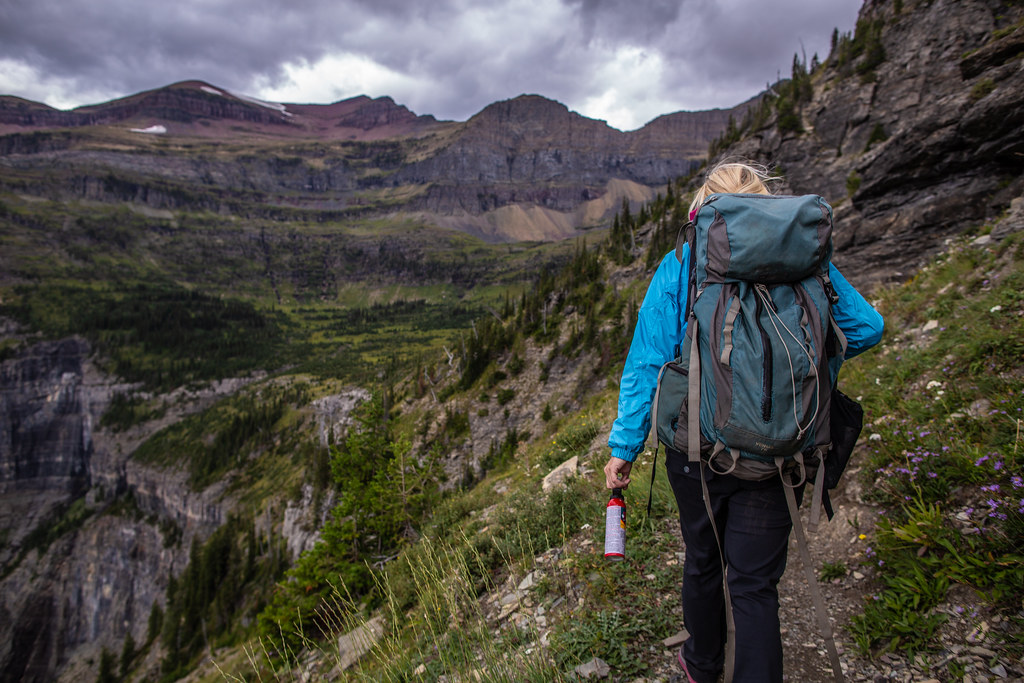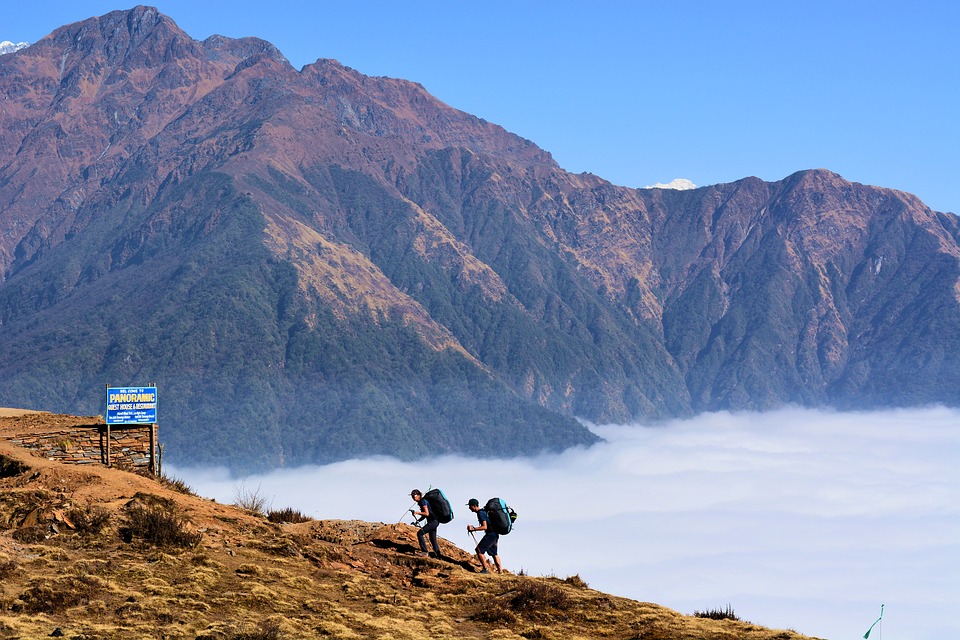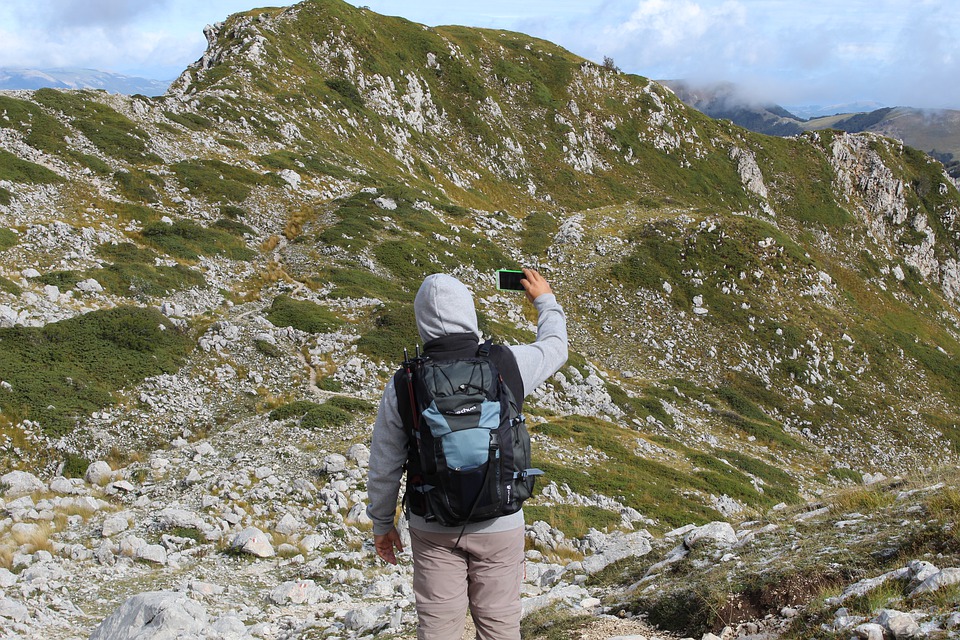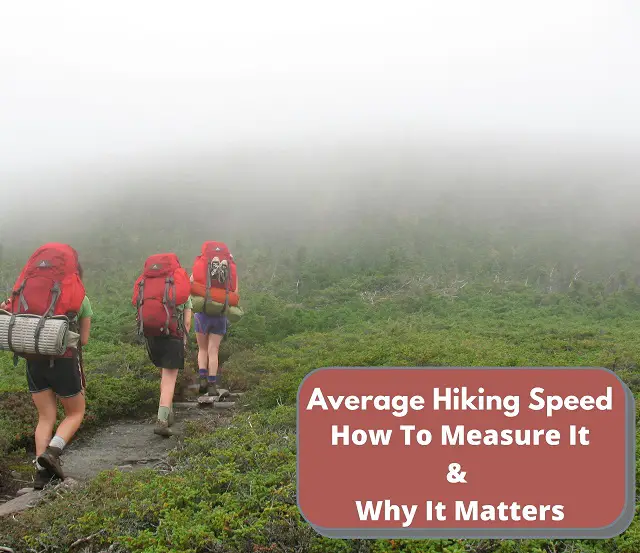Although knowing your average hiking speed may seem like just another number to brag about, it’s actually a quite important number to have.
Understanding your average hiking pace can help you plan your hikes on different trail lengths and can assist in navigation while you’re outdoors, and also comes especially in handy on multi-day hikes and backpacking trips.
What Is The Average Hiking Speed?
- Most hikers have an average hiking speed of 2 to 3 miles per hour.
- Most speed hikers have an average hiking speed of 4 to 5 miles per hour.
- Most trail runners have an average hiking speed of 6 to 8 miles per hour.
Your average hiking speed is the speed at which you typically hike, and varies quite a bit from person to person based on skill level, fitness level, and the terrain and conditions in which you’re hiking.

Why Does Average Hiking Speed Matter?
Knowing how fast (or slow) you hike is helpful in the following situations:
- It lets you plan properly for hikes by knowing how long it will take you to complete a trail or loop
- You’ll be able to plan for breaks or overnight stops accordingly when thru-hiking or backpacking
- Allows you to better estimate an ETA for you to communicate to your family members
- Enables you to have a baseline upon which to improve (if you desire)
How To Calculate Average Hiking Speed
Manually Calculate Your Average Hiking Speed
- Step 1: Using a map, measure out a stretch of mostly flat hiking trail (we recommend 1/10th of a mile to keep it short and simple).
- Step 2: Hike that distance of trail three separate times, recording how long it took you each time (Example: 15 minutes, 18 minutes, 14 minutes)
- Step 3: Add all three times together (47 total minutes)
- Step 4: Divide your total by three (47/3 = 15.67 minutes)
- Step 5: Multiply that number by 10 (15.67 x 10 = 156.7)
- Step 6: Divide that number by 60 (156.7/60 = 2.61)
- Result: You now have your average hiking speed in miles per hour (2.61 mph)
Calculate Average Hiking Speed With Naismith’s Rule
Naismith’s rule is more of a rule of thumb than a scientific rule, so understand that this is an estimate.
Naismith’s Rule states:
- It takes an adult hiker approximately 1 hour to hike 3 miles on flat ground
- An additional half hour should be added for every 1,000 ft of elevation gained
- So if you were hiking a 15 mile trail with a 1,000 ft ascent, it should take you around 5.5 hours (15 miles / 3miles = 5 hours, plus 30 extra minutes for the 1,000 ft ascent).
- This rule does not take into account the steepness of the elevation, plus it also assumes that the average hiking speed is 3mph, so take this with a grain of salt.
Find Your Average Hiking Speed By Using A Smartphone, GPS Watch, Or GPS Device
This is going to be the most accurate way to find your hiking speed, since you can measure specific portions of the trail along with inclines, declines, and even your slowest and fastest speeds.
Some of the best smartphone apps we’ve seen include AllTrails, Komoot, and Strava which will calculate this info and even help you estimate how long future hikes on new trails will take.

Factors That Affect Your Average Speed Of Hiking
There are plenty of variables that can impact how fast you hike, so be sure to account for these when planning your trip:
Fitness Level
If you’re used to simple and flat day hikes, your speed on a longer hike is going to be noticeable slower at the end of a full-day hike or at the end of a several day hiking trip.
Trail Conditions
Depending on mud or if you’re hiking off-trail, you can see your average hiking speed cut by up to half.
Inclines And Steep Terrain
Inclines can cut up to a third of your speed depending on how steep they are.
Weather
Rain, wind, snow, and mud are all things that will slow you down while you’re out on the trail.
Not only do they make the going slower, but in some cases it may force you to take shelter, re-route, or add gear, all of which takes extra time.
The Weight Of Your Gear
There’s a common rule of thumb in hiking that states for every 1% of your body weight you’re carrying, your pace will be cut down by 10 seconds per mile.
Using this example, if you weigh 160 lbs and your pack is 35 pounds, you’re carrying nearly 22% of your body weight on your pack. That 22% will result in you taking 3.6 minutes longer to hike a mile than if you weren’t carrying all that gear, so it could add over half an hour of extra time on a ten mile hike.
Elevation
At high altitudes your lungs will have less oxygen to pump blood to your muscles and organs.
Considering the fact that hiking is both aerobic and anaerobic, oxygen is important for the aerobic components to function at their full potential.
The lack of oxygen at high altitude will allow fatigue to set in faster, slowing you down.
Break Length & Frequency
If you’re stopping to eat lunch, take photos, or soaking in the view, these all add time to your hike.
Nothing’s wrong with a leisurely hike – we love it – but make sure to plan your hike accordingly so you’re not stuck on the trail after dark (unless you planned for night hiking and have the right gear).

How To Increase Your Average Hiking Speed
If you’re enjoying yourself on the trail, there’s really no need to be concerned about your average hiking speed, as this is personal.
Now if you want to get into speed hiking or you find yourself not able to complete longer trails without running into timing issues, we certainly understand your concern.
Follow these tips to improve your trail pace:
Reduce Your Pack Weight
The less gear you’re hauling, the less energy you’ll spend and the faster you’ll hike.
If hitting the trail for a longer day hike, skip the daypack and consider using a hiking fanny pack instead.
Eat Better Foods
It’s true what they say: food is fuel, and what you put in your body affects its performance.
Eat enough calories and make sure you are getting a good balance of protein, fats, and carbs with your meals and snacks.
Make sure to stay hydrated and carry plenty of water while hiking.
Train Your Body
The better shape you’re in, the longer and faster you’ll be able to hike. Hiking burns belly fat, so the more hiking you do the less weight your body will need to transport, which will help.
Additionally, check out our guides on exercises to give you explosive power when hiking uphill and how to train for hiking on a treadmill for some great options.
Take Breaks Only When Needed
Breaks add up, so you should be mindful about taking breaks only as needed, which will help you to get your total hike completed faster than if you were relaxing every hour.
Using The Right Gear
Wearing a well-fitting pair of hiking boots and bringing some hiking sticks along will do wonders for your average hiking speed.
Wearing broken-in hiking boots will help prevent blisters and hot spots from forming, while trekking poles will help to shift the load off your lower body which will improve your endurance and stamina while hiking.

